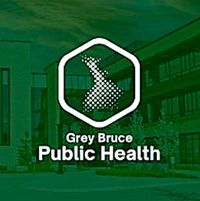The ongoing measles outbreak in Ontario has raised significant concern among public health officials, especially following the confirmation of multiple cases across various regions, including Lambton County, Grey Bruce, and Waterloo. As of March 21, 2025, the situation has escalated within the province as public health efforts strive to manage the spread of the virus amidst a backdrop of vaccination challenges.
Lambton Public Health confirmed its first measles case of the year on March 21, amidst a provincial outbreak where numbers have spiked dramatically. Public Health Ontario reported 440 cases of measles in the province since the start of 2025, with a noted 120 new cases appearing just within the last week.
Said Dr. Karalyn Dueck, Lambton's medical officer of health, “We have seen a significant uptick in cases, and this is particularly alarming considering our previous record of ten years without a confirmed case.” The current outbreak, they note, primarily affects unvaccinated individuals. Since 2023, statistics indicate that about 93% of cases among infants, children, and adolescents involved individuals who were not vaccinated.
The outbreak's origins trace back to a large Mennonite gathering in New Brunswick last fall, as revealed by Dr. Kieran Moore, Ontario’s chief medical officer of health. The initial infection was reportedly imported when a traveler flew from the Philippines and later transmitted the virus to unvaccinated individuals in southern Ontario.
Grey Bruce Public Health has also reported its own confirmed case in an unvaccinated child, prompting immediate isolation measures for the child and their family. Dr. Ian Arra of Grey Bruce Public Health stated, “We are grateful to the affected family for their efforts to maintain isolation and protect the public while awaiting test results.” Current assessments suggest that the risk of further transmission in Grey Bruce remains low, particularly among vaccinated individuals.
Measles is known to be highly contagious and can linger in the air for several hours after an infected person has left the area. Symptoms typically manifest 7 to 21 days after exposure and can include a high fever, respiratory symptoms, and a distinct rash. Public health officials are stressing the importance of vaccinations as the most effective means of preventing disease spread.
The vaccination landscape in Ontario presents a pressing issue. Data indicates that as of the last school year, only 70% of the province's schoolchildren were fully vaccinated against measles. Ontario Health authorities recommend that all children receive two doses of the measles vaccine, with recommendations beginning at the age of one and a booster between ages four and six. Dr. Moore emphasized, “Those who have received both doses of the vaccine are protected 100% against measles.”
Public health responses have included extensive contact tracing and monitoring of exposure sites. For instance, Southwestern Public Health reported 223 confirmed cases since autumn 2024, with a significant number linked to unvaccinated individuals, particularly within community segments that traditionally have had lower vaccination uptake.
As this public health crisis unfolds, officials are reminding residents of the symptoms of measles and encouraging vigilant reporting to healthcare providers if they suspect exposure. “If you think you're infected, call before visiting any health facilities,” said public health officials, urging individuals to self-isolate until they can confirm their health status.
This outbreak has not only exasperated existing health vulnerabilities but has raised awareness of the challenges posed by vaccine hesitancy, particularly in conservative communities such as the Mennonites, where some may refuse vaccinations on religious or cultural grounds. While health leaders from Mennonite organizations have previously stated there are no scriptural grounds for refusing vaccines, hesitance about modern medicine still poses a critical barrier in efforts to achieve community immunity.
As health authorities intensify outreach efforts, vaccination clinics are being mobilized to increase immunization rates among the affected populations. Ontario’s healthcare system continues to monitor vaccine supplies, ensuring that doses are readily available as needed.
Ultimately, this measles outbreak has highlighted severe public health challenges and the importance of maintaining high vaccination rates to ensure community protection against vaccine-preventable diseases. Health authorities remind everyone to check their immunization records and remain up to date on recommended vaccines, which are vital in protecting individual and public health.






